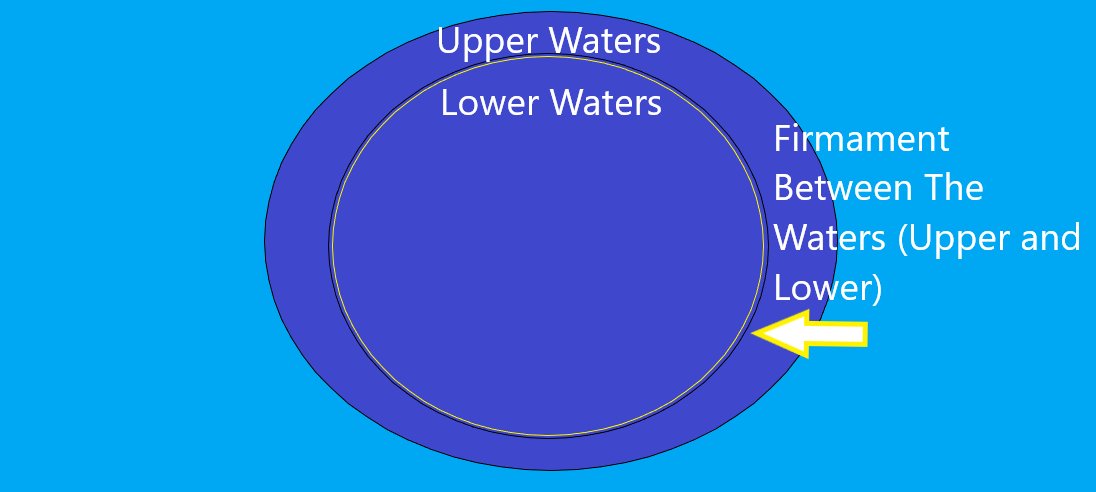

However, if rainbows (and clouds) existed before the flood, this would not be the only time God used an existing thing as a special “new” sign of a covenant (e.g., bread and wine in the Lord's Supper). Some have argued that God's use of the rainbow as the sign of His covenant with Noah ( Genesis 9:12-17) suggests that there were no rainbows, and therefore no clouds or rain, before the flood. However, the Bible does not actually say this, so we should not be dogmatic. Some have suggested that there was no rainfall anywhere on the Earth until the time of the flood. Genesis 2:5 tells us that there was no rain before man was created.
Oceans firmament windows#
The other source of the waters for Noah's flood was “the windows of heaven.” Genesis 7:12 says that it rained for 40 days and 40 nights continuously. (Scene from the award-winning Christian video, The World that Perished.) But this was not the major source of the Flood waters. This would spill the seawater onto the land and cause massive flooding-perhaps what is aptly described as the breaking up of the “fountains of the great deep.” The windows of heavenĭuring the Flood, the world was deluged in 40 days of rain. have proposed that at the onset of the flood, the ocean floor rapidly lifted up to 6,500 feet (2,000 meters) due to an increase in temperature as horizontal movement of the tectonic plates accelerated. In their catastrophic plate tectonics model for the flood, Austin et al. It is interesting that up to 70 percent or more of what comes out of volcanoes today is water, often in the form of steam.
Oceans firmament series#
So it is quite plausible that these fountains of the great deep involved a series of volcanic eruptions with prodigious amounts of water bursting up through the ground. There are many volcanic rocks interspersed between the fossil layers in the rock record-layers that were obviously deposited during Noah's flood. The waters that had been held back burst forth with catastrophic consequences. Genesis 7:11 says that on the day the flood began, there was a “breaking up” of the fountains, which implies a release of the water, possibly through large fissures in the ground or in the sea floor. Some have suggested that when God made the dry land appear from under the waters on the third day of creation, some of the water that covered the earth became trapped underneath and within the dry land. If the fountains of the great deep were the major source of the waters, then they must have been a huge source of water. “Fountains of the great deep” scene from The World That Perished In the context of the flood account, it could mean both. So, the “fountains of the great deep” are probably oceanic or possibly subterranean sources of water. The Hebrew word ( mayan) translated “fountains” means “fountain, spring, well.” “The deep” is used more often, and usually refers to the oceans (e.g., Genesis 1:2 Job 38:30, 41:32 Psalm 42:7, 104:6 Isaiah 51:10, 63:13 Ezekiel 26:19 Jonah 2:3), but sometimes to subterranean sources of water ( Ezekiel 31:4, 15). “The great deep” is used three other times: Isaiah 51:10, where it clearly refers to the ocean Amos 7:4, where God's fire of judgment is said to dry up the great deep, probably the oceans and Psalm 36:6 where it is used metaphorically of the depth of God's justice/judgment. “Fountains of the deep” is used in Genesis 8:2, where it clearly refers to the same thing, and Proverbs 8:28, where the precise meaning is not clear. What are the “fountains of the great deep?” This phrase is used only in Genesis 7:11. The “fountains of the great deep” are mentioned before the “windows of heaven,” indicating either relative importance or the order of events. The sources of the water are given in Genesis 7:11 as “the fountains of the great deep” and the “windows of heaven.” The Fountains of the Great Deep In telling us about the world-changing Flood in the days of Noah, the Bible gives us much information about where the waters came from and where they went.

Noah’s Flood-Where did the water come from?


 0 kommentar(er)
0 kommentar(er)
